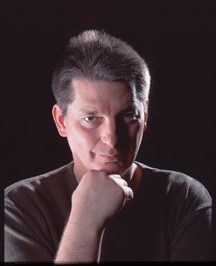
Blending the new and old
On Thursday, February 11, the Berkeley Symphony performs its third program under the baton of its new musical director and conductor, Joana Carneiro. It’s an unusually substantial program, which combines short contemporary pieces by composers Paul Dresher and Esa-Pekka Salonen with Beethoven’s Symphony No. 3, the “Eroica.”
Maestra Carneiro describes how in choosing the program she began with Salonen’s piece, “Five Images After Sappho,” a 20-minute song cycle for soprano, which sets five fragments using Mary Barnard’s very clean and incisive translations. From there, “Beethoven was an easy match”—not only because Salonen has conducted Beethoven at the Los Angeles Philharmonic but also because of the way the two composers construct their music: the transitions in the compositions, Carneiro asserts, “are so logical.”
The third piece on the program, however, has a different reason for being there, and that is Carneiro’s commitment to playing music by Berkeley composers. Earlier in the season, the symphony performed John Adams’ The Chairman Dances and Gabriela Lena Frank’s Peregrinos. This week the symphony is presenting Paul Dresher’s Cornucopia, a 17-minute single-movement piece that was originally commissioned by the Saint Paul Chamber Orchestra and was conducted by John Adams in its 1990 premiere.
Composing the adventurous
Dresher, whose ensemble performs in the Bay Area and nationally, is known for his innovative music, based on a combination of electronic and acoustic instrumentation. In Cornucopia, he used a series of techniques that he developed while writing for electric guitar and tape loops.
“I built it on the idea of a simple series of notes,” he explains, and “then I would accumulate events. Adding a note in each cycle, then adding notes that would shift the harmonies . . . Each time the cycle would get more complex, the harmonies richer, the counterpoint more evolved. That was the initial large gesture of the work.”
The second gesture driving the piece was experimental: “I was hanging out at Mills [College] with Robert Ashley’s group, and he was working with theory that asked, ‘How many different parts in counterparts can you actually keep separate?’ ” Following that lead, Dresher began to experiment with how many parts he could use in a rhythmically repetitive section before the parts began to fuse together in the listener’s perception. “I think I came up with nine parts,” he laughs and concludes, “I don’t know if every musician in the piece feels they are autonomous, but using register, timbre and rhythm, you can define very different areas in a densely layered contrapuntal texture.”
Dresher confesses that the work is difficult and adds, “[The players] are doing some hard music. Salonen writes challenging work; he’s a very skillful composer, but [his music is] not simple.” Dresher admires the Berkeley orchestra, which has steadily become more professional over the past three decades.
Dresher’s own compositions have created some havoc in the classical concert hall in the past. “This piece is 20 years old,” he recalls, “and back then orchestras were not very well populated by musicians who played any kind of popular music”; although Dresher writes his chamber music for classical instrumentalists, his concept of rhythmical counterpoint derives as much from the world of popular music as from the classical repertory: “The hardest part of my music isn’t the notes,” he explains, “but making them work with the rhythmical world of the other players.”
Since he composed Cornucopia, however, classical musicians have become more diverse, and he believes that the Berkeley Symphony’s performance will be a success, not only because of the diversity of the musicians’ experience but also because of the symphony’s past accomplishments: “They have a legacy, that perhaps Kent [Nagano] more than anyone established, of doing difficult pieces. Almost no orchestra that works from a community base attempts that kind of repertory. Certainly Kent undertook some truly astonishing artistic risks.”
It looks like Berkeley’s vivacious maestra is eager to continue the tradition. The newly released 2010-11 season combines standards of the symphony hall with short contemporary compositions. On February 7, at the reception for the orchestra’s “Under Construction” series—the generous and brilliantly conceived program that allows young composers to hear their work played by the symphony—Joana Carneiro was all smiles when she pointed out that the coming season presents more music from the 21st century than from any other musical time period.
It’s a new, fresh and eager world.
—Jaime Robles
Music Director Joanna Carneiro’s inaugural season continues with compositions by Paul Dresher, the inventive Berkeley composer whose Cornucopia was premiered with John Adams conducting; Esa-Pekka Salonen’s chamber setting of texts by the ancient Greek poet Sappho, Five Images After Sappho, sung by resident artist Jessica Rivera. The program concludes with Beethoven’s “Eroica” symphony. Zellerbach Hall, UC Berkeley campus. $10–$60.
Originally published in the Piedmont Post
